More than one place, actually … .
The bulky single-shot pistols of the Revolutionary War were often carried so.
Cross draw was quite common among cowboys and lawmen in the Old West.
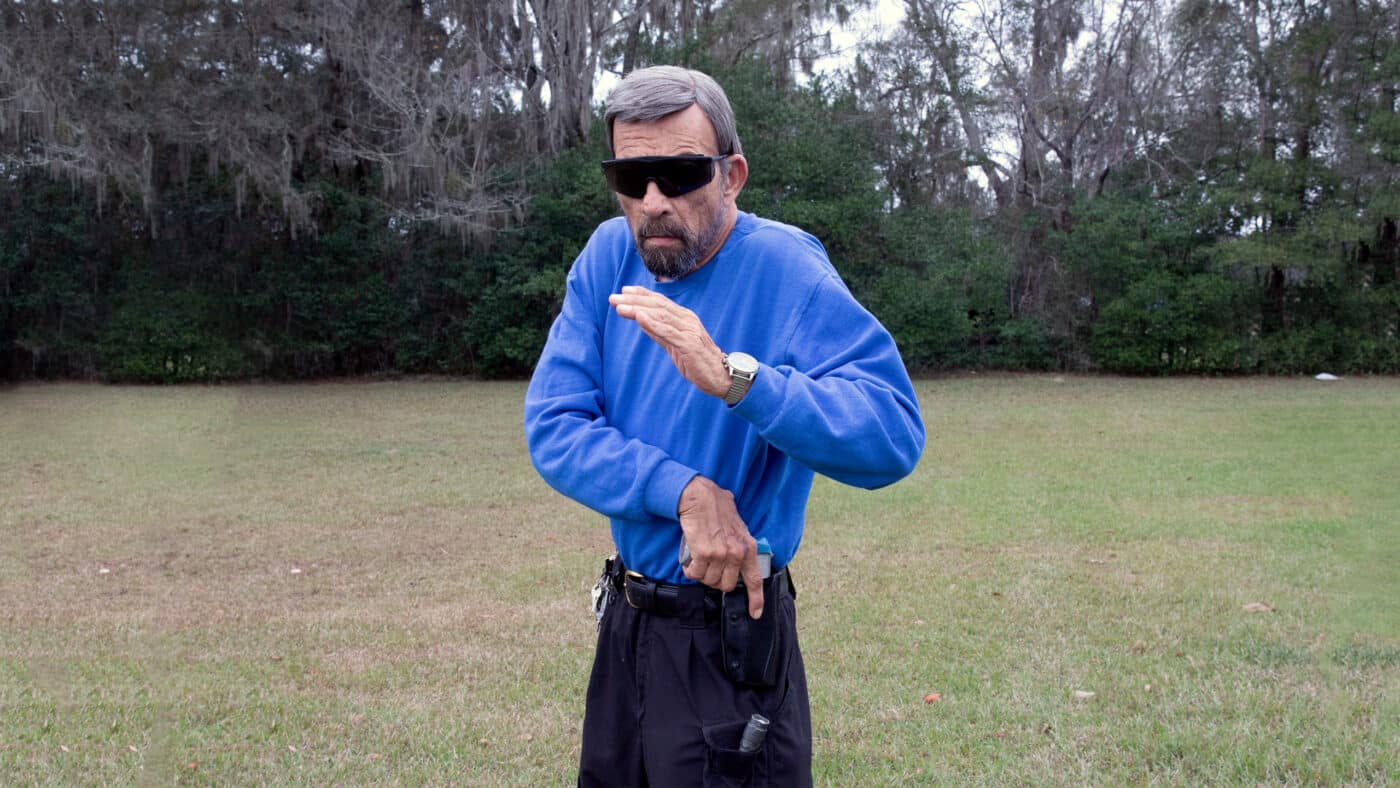
Cross draw carry offers a range of benefits and potential problems. Massad Ayoob considers both the why and the how to cross draw carry. Photo: Gail Pepin
Looking Ahead
Fast forward into the 20thcentury.
Plainclothes detectives were the last cops to cling to the cross draw.
Now, we cant discuss gun culture in America without mentioning Hollywood.
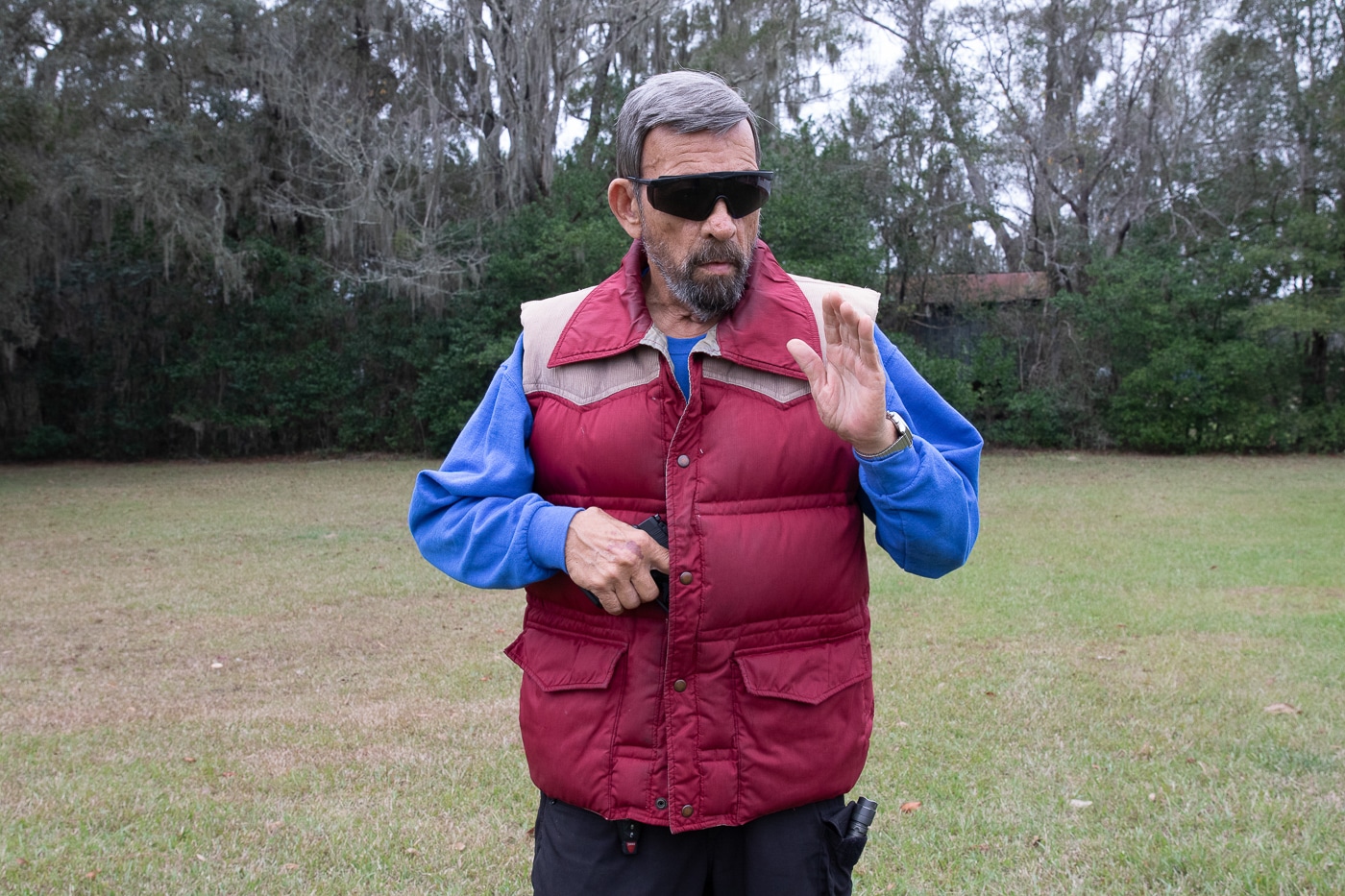
Leave some buttons undone, and this Hellcat Pro with Hex optic can be cross-drawn swiftly. Photo: Gail Pepin
The same cross-body advantages were in place and cross draw was hugely popular for detectives there.
It actually reflected reality when Jack Webb as Detective Joe Friday carried his snub-nose .38 there.
Thats about gone now.
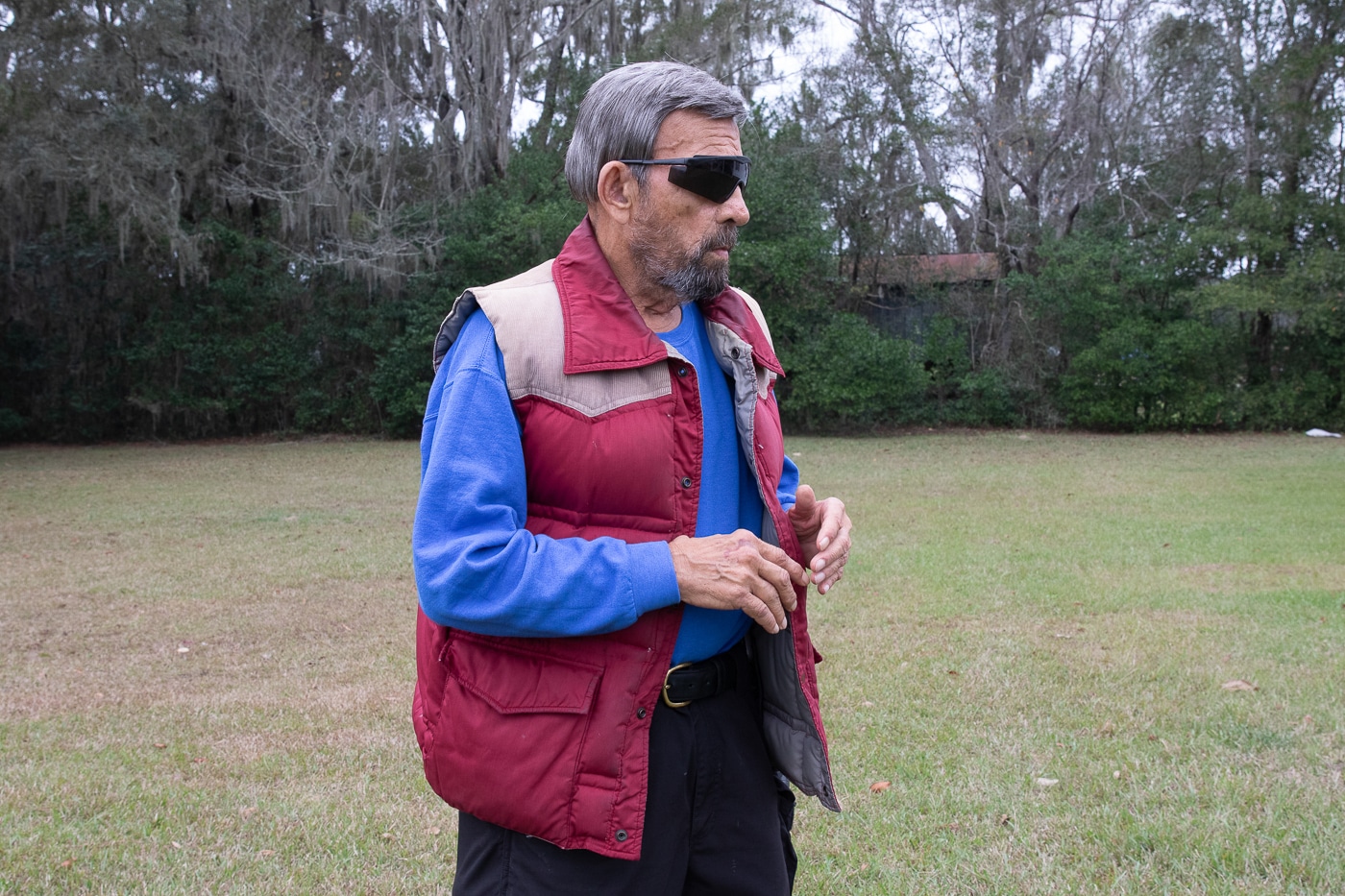
When carrying a pistol cross draw, the author starts with the holster side edged toward the target. Photo: Gail Pepin
The Pros of Cross Draw
There are a variety of pros and cons to cross draw carry.
Lets highlight them now.
Cross draw is very fast from seated.
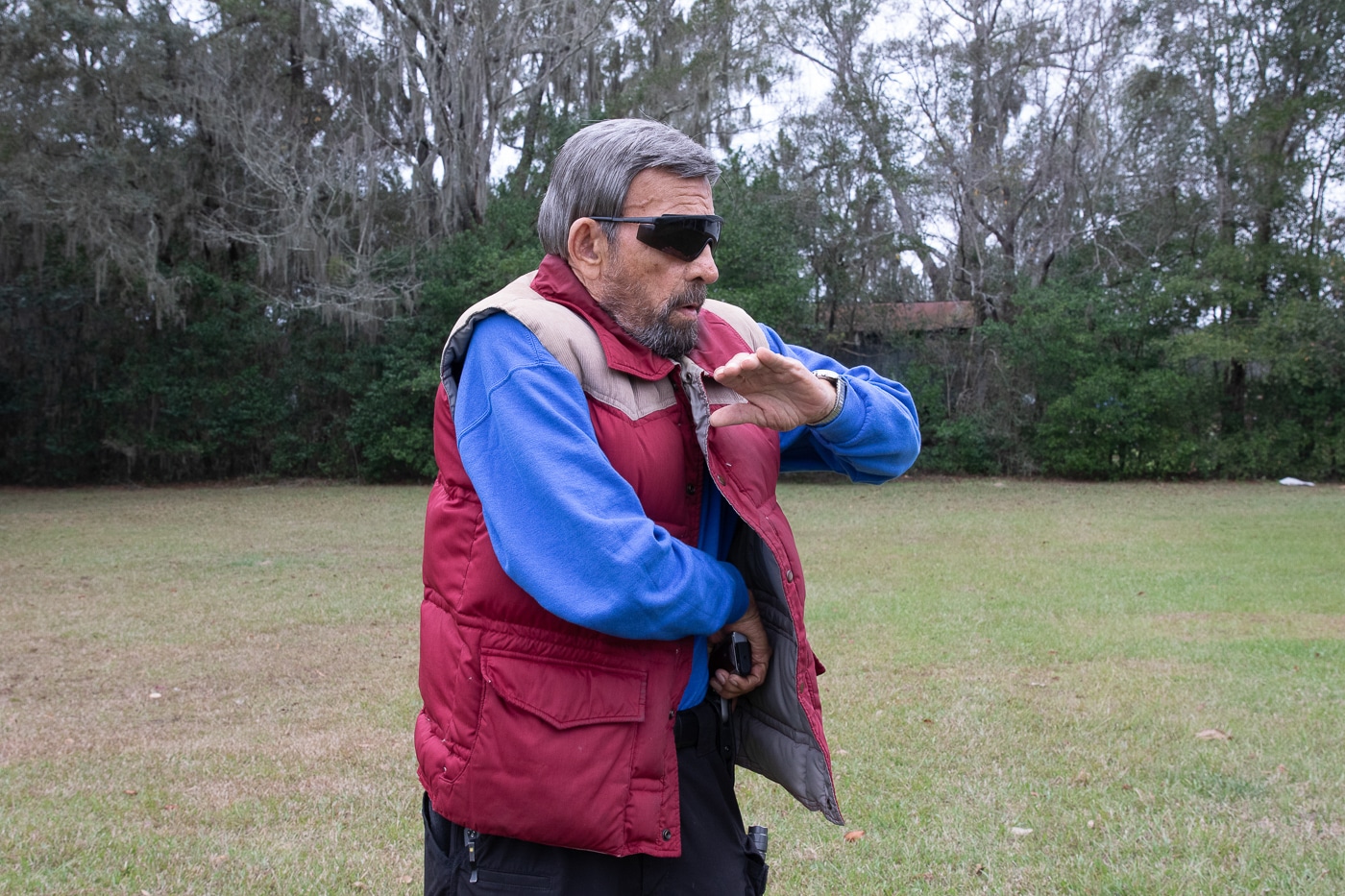
As he draws, the author’s support arm rises to block close threats as the gun hand takes a secure grasp of his Springfield 1911. Photo: Gail Pepin
Cross draw can be very quick from under open-front garments fastened closed.
The cross draw can be an orthopedic holster.
Sciatica is bothering your hip on the gun hand side?
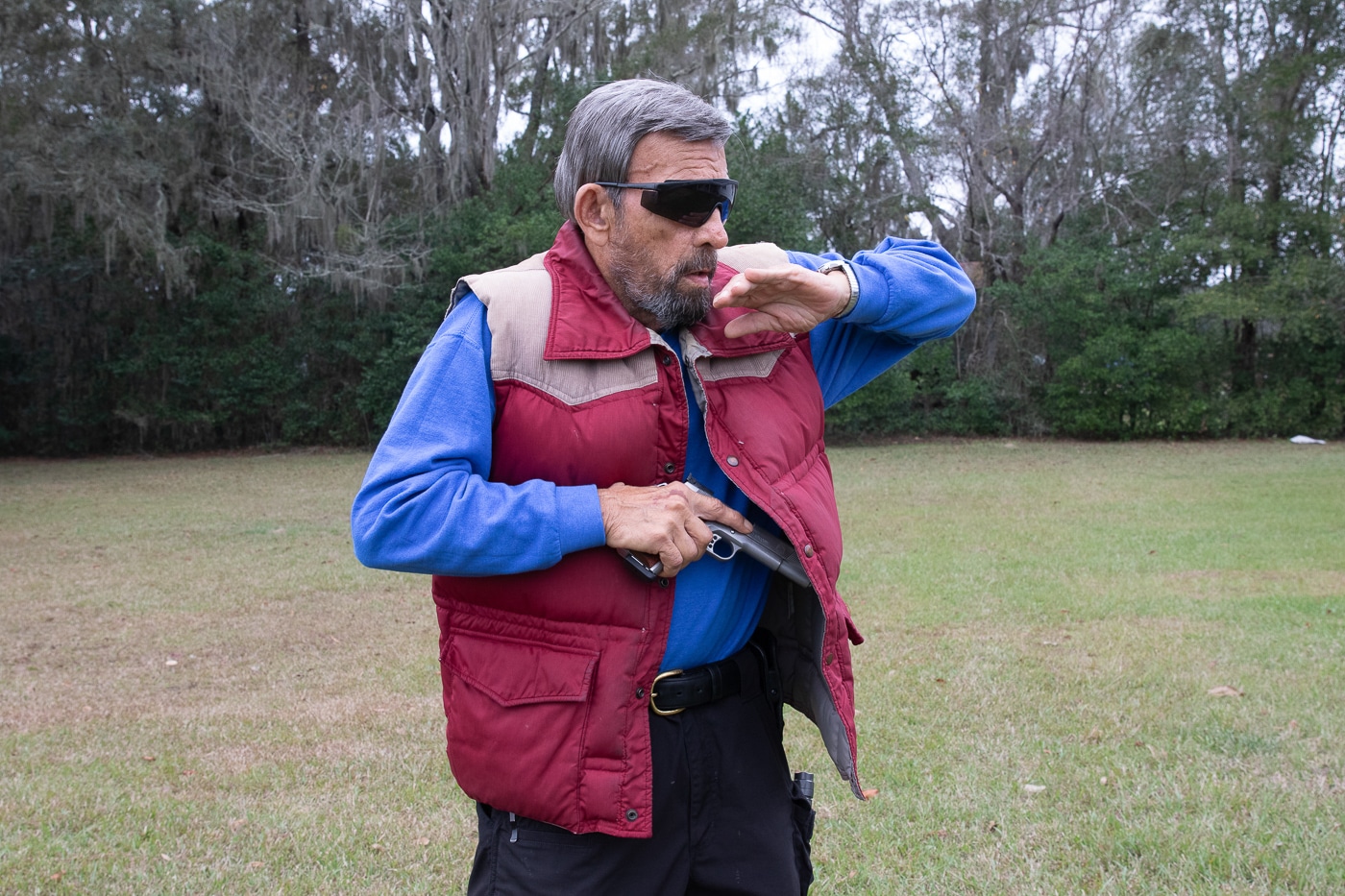
As the author’s pistol clears his cross draw holster, it is already in line with the threat. This prevents “muzzling” anyone on the firing line during training. Photo: Gail Pepin
A switch to cross draw may be the easiest cure, whether temporary or permanent.
Here is where the cavalry draw comes into its own.
You turn your support hand thumb back with palm toward your body and grab the pistol grip.
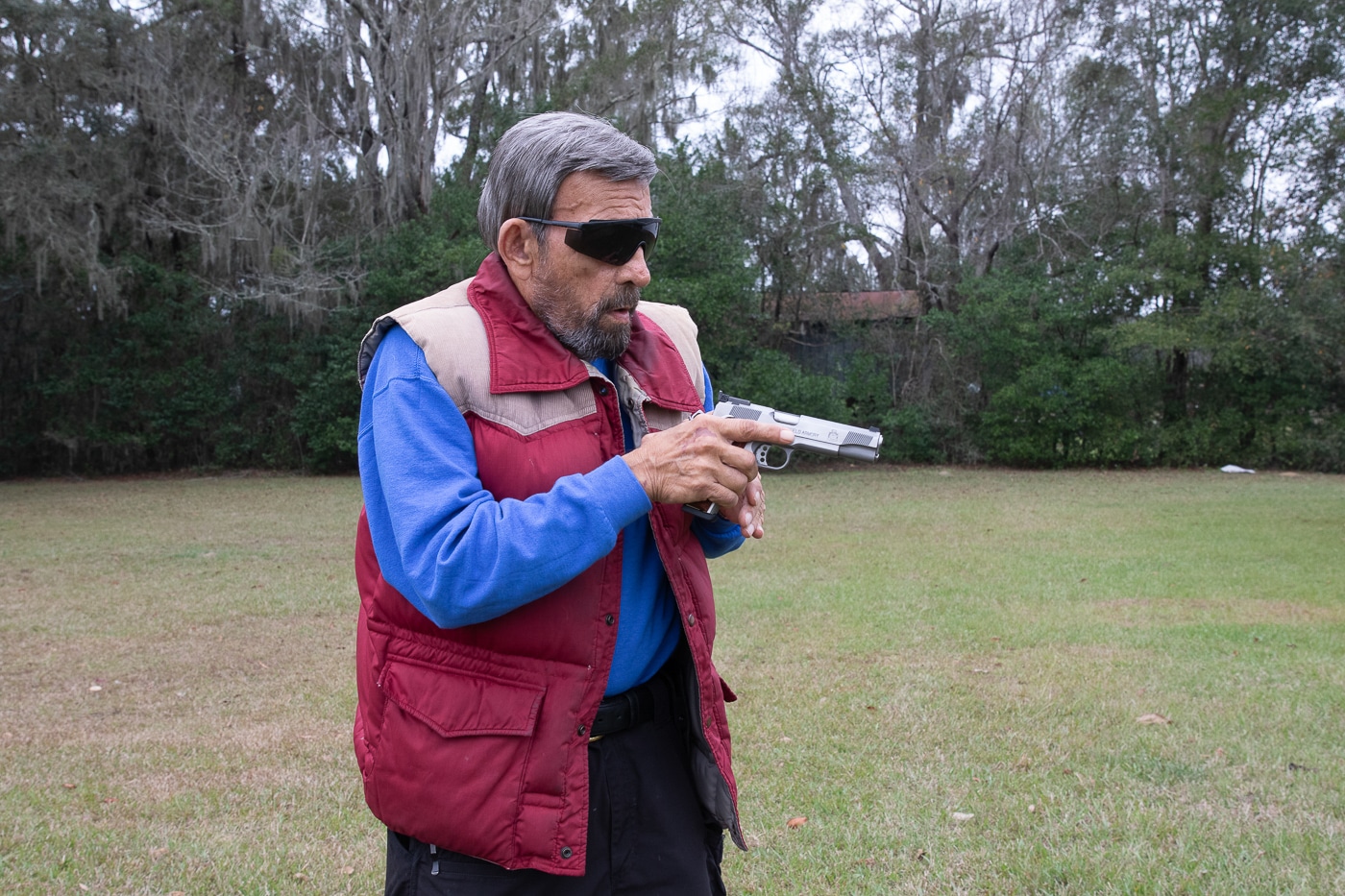
The author’s hands meet as he extends the pistol straight toward the target. Photo: Gail Pepin
These can include:
Facing a hostile opponent at close range.
Cross draw is banned in many sports (PPC and IDPA to name two).
If facing square to the threat, cross draw has some negatives.
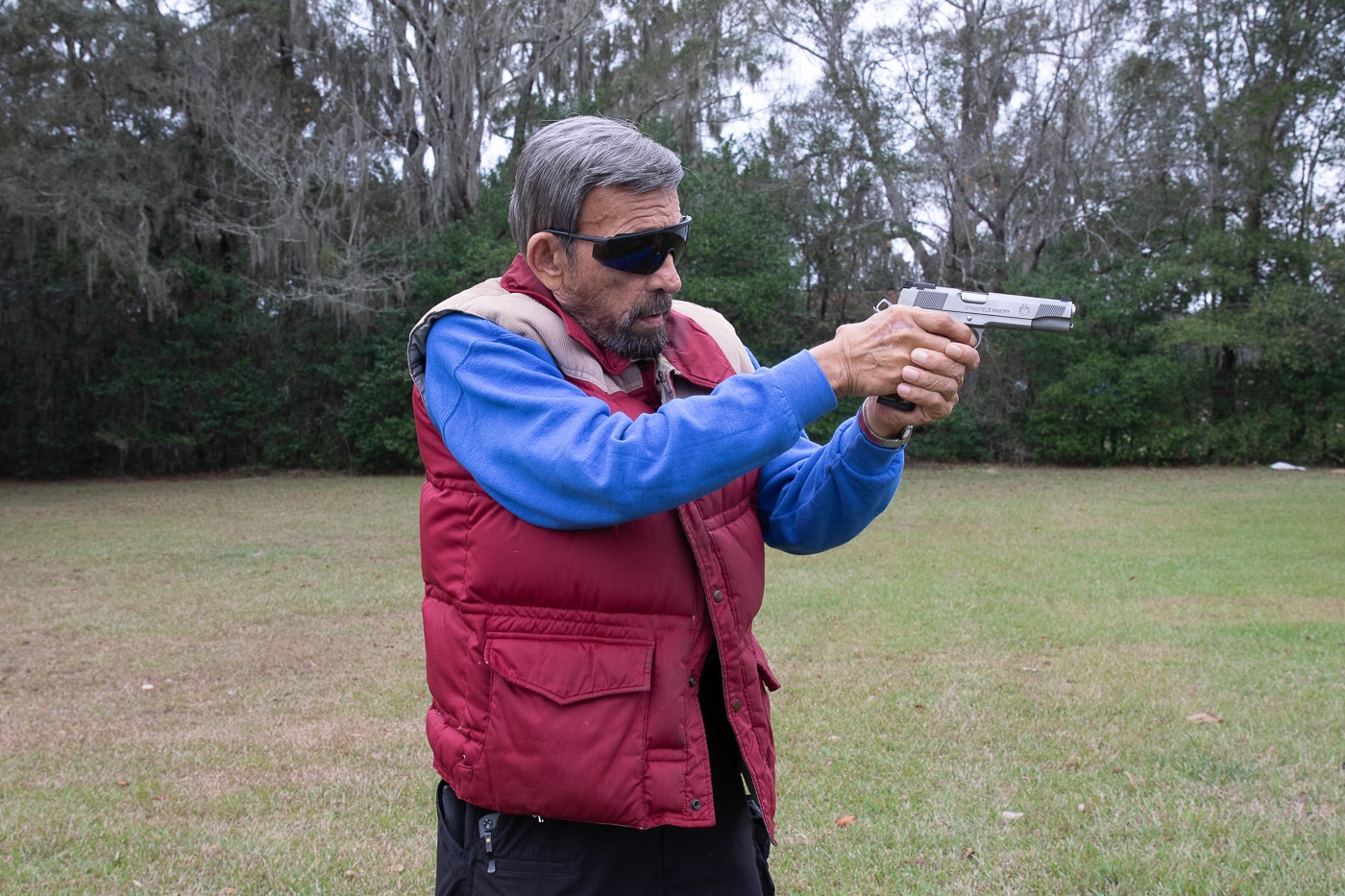
Theclassic Weaver stance(both arms bent in push-pull) lends itself particularly well to cross draw due to the body mechanics involved. Photo: Gail Pepin
Issues if the holster is at the opposite hip or behind it.
There are range of movement issues involved.
However, as weve seen above, it has its place.
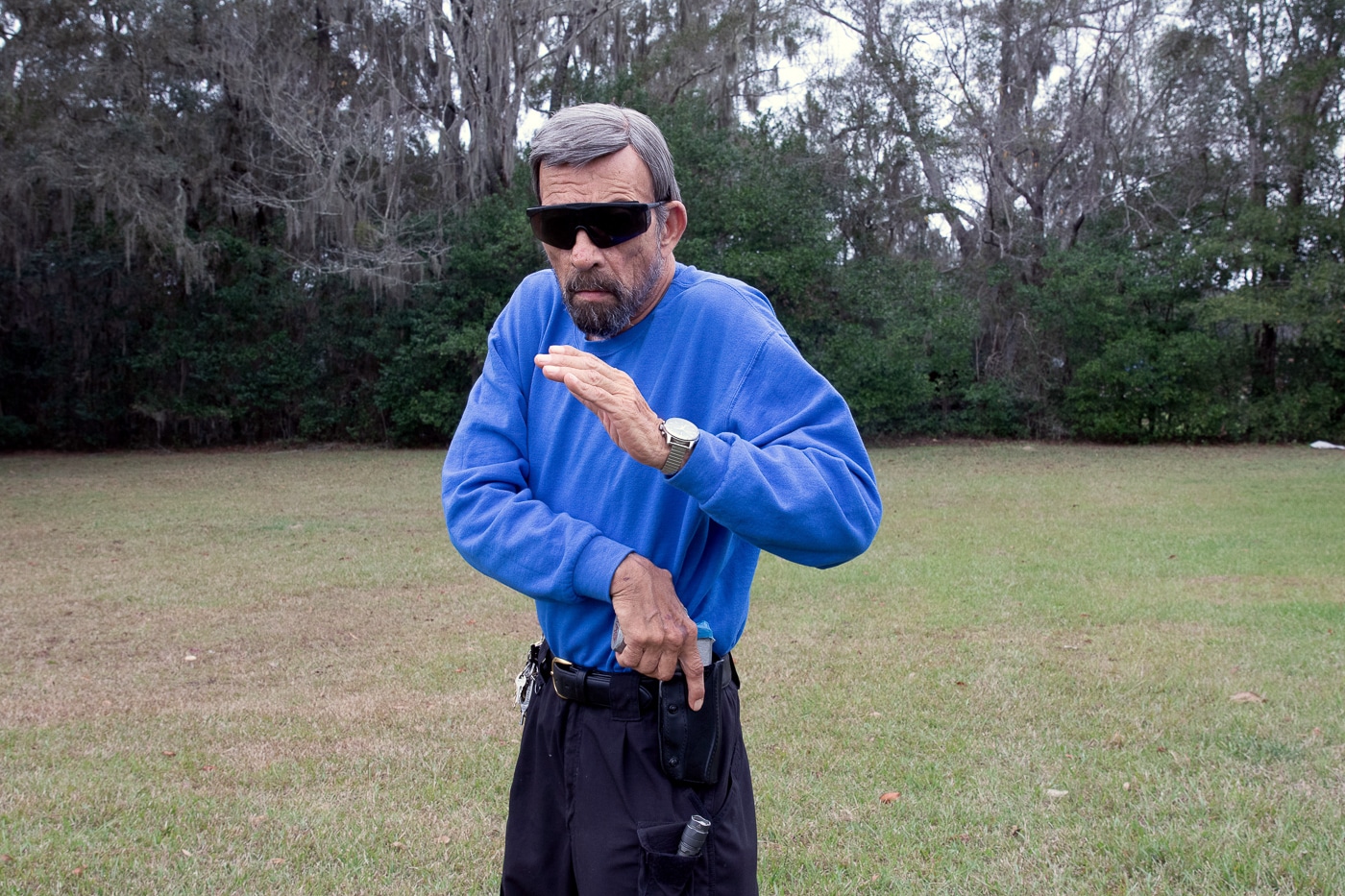
With the holster side of the body edged toward the target, the opponent has a harder time pinning the drawing hand while the support arm is rising to block an attack. Photo: Gail Pepin
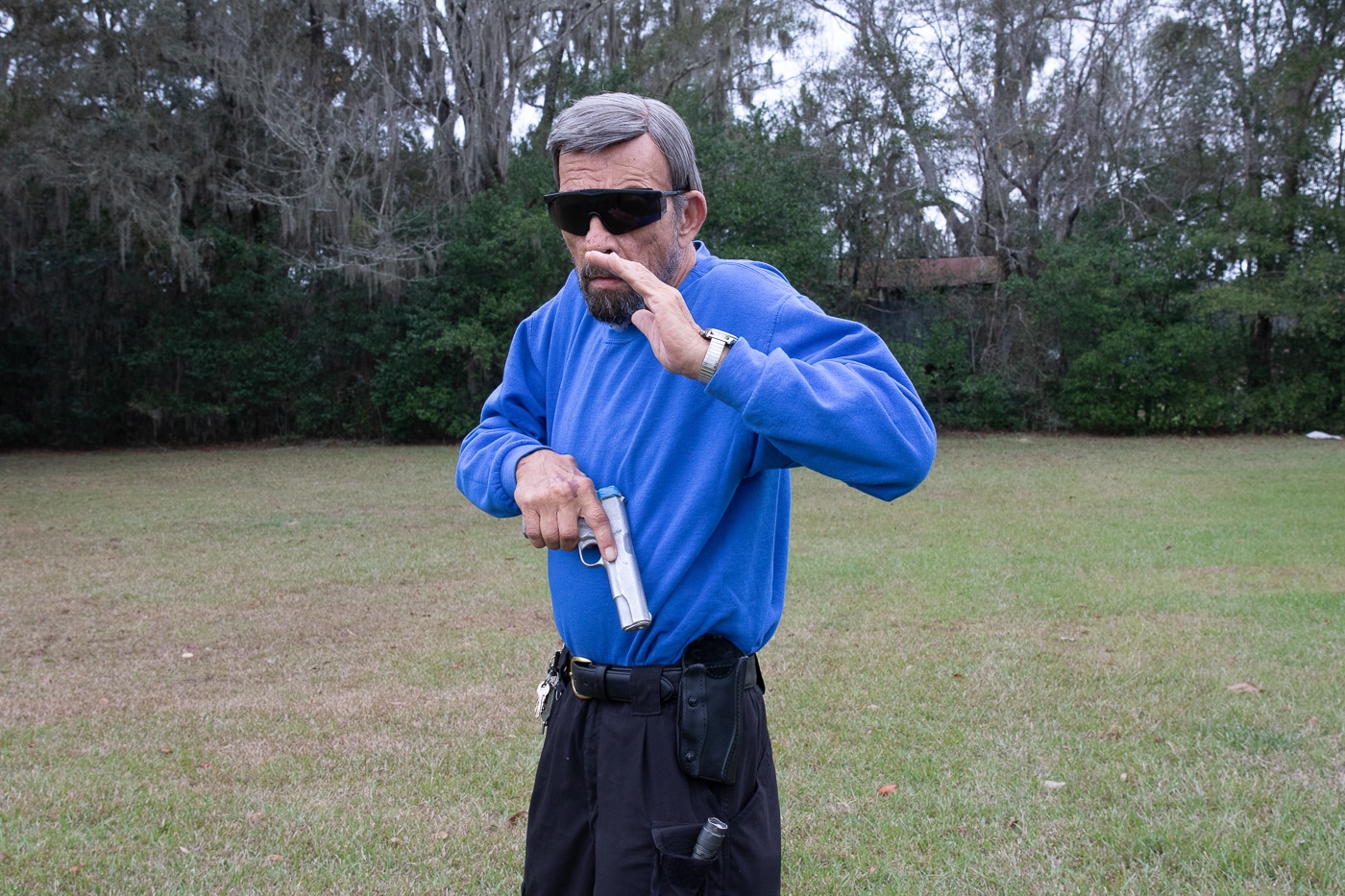
As the draw of the author’s training pistol begins, the muzzle is pointed in a safe direction as soon as it clears the holster. Photo: Gail Pepin
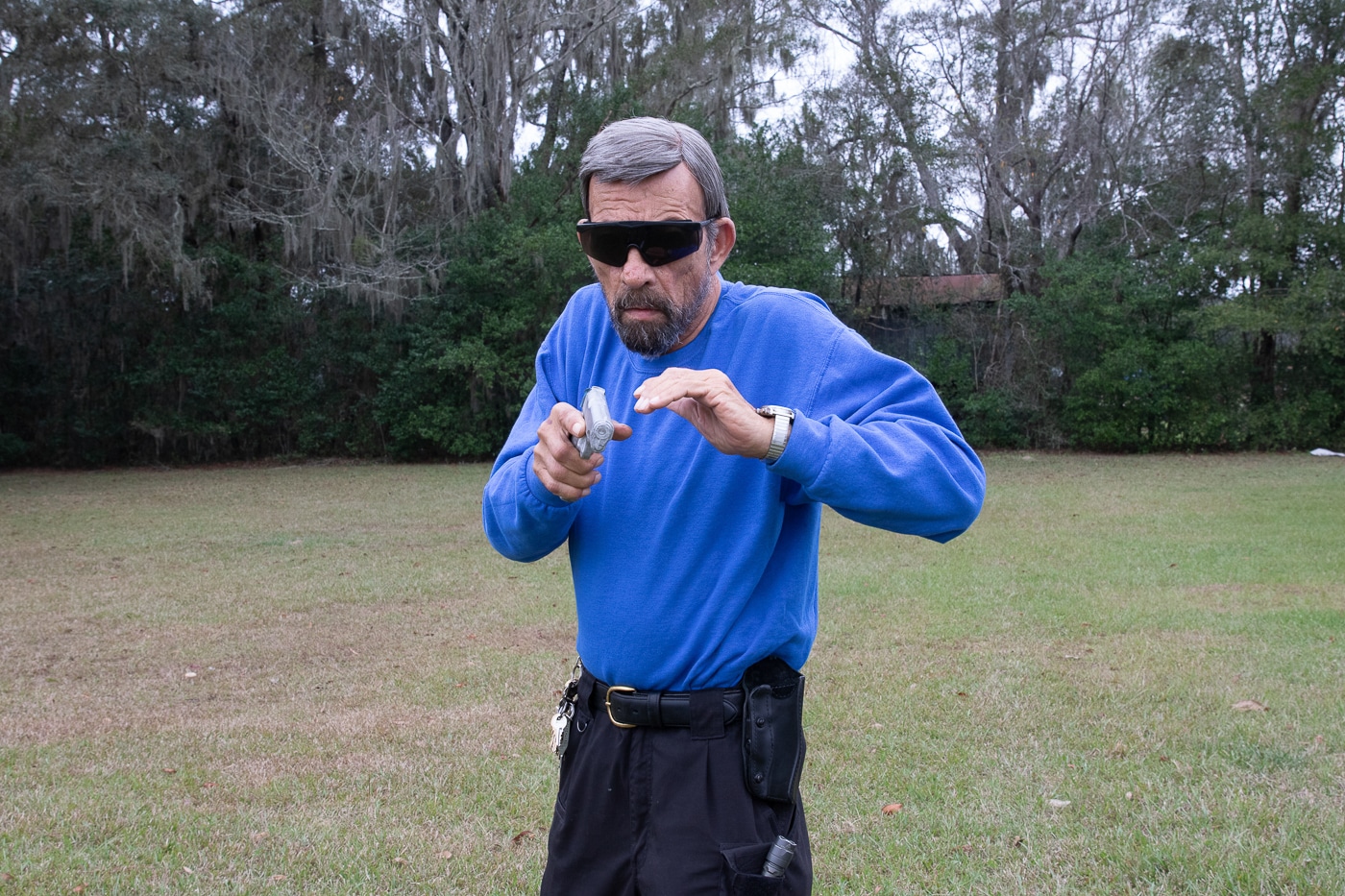
The pistol is quickly pointed at the target or threat as the support hand comes frombehindthe muzzle to take a two-hand hold. Photo: Gail Pepin
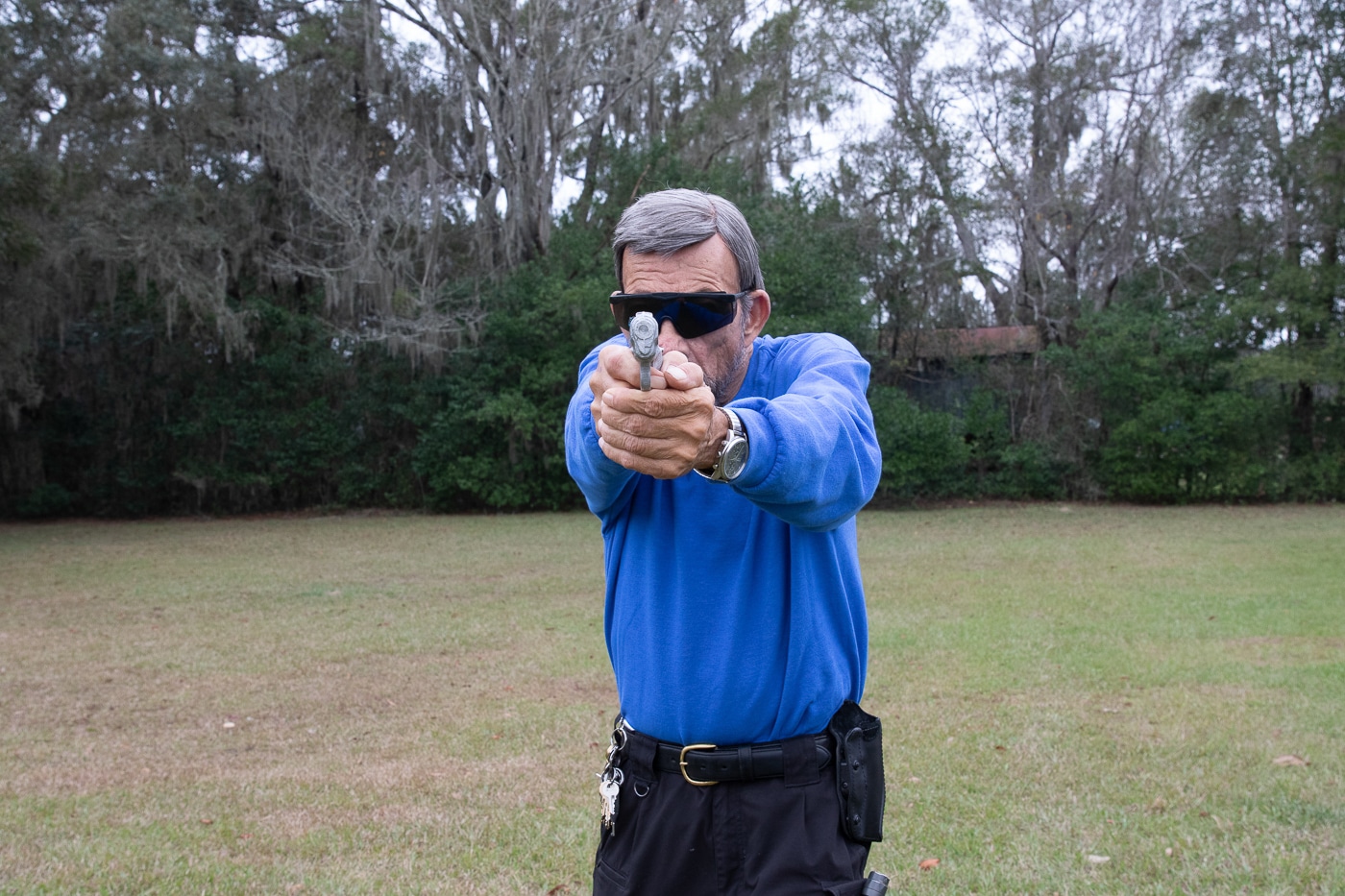
Completing the cross draw, the author is now on target and ready to deliver shots if required. Photo: Gail Pepin

Cross draw is particularly amenable to “weak hand draw” …
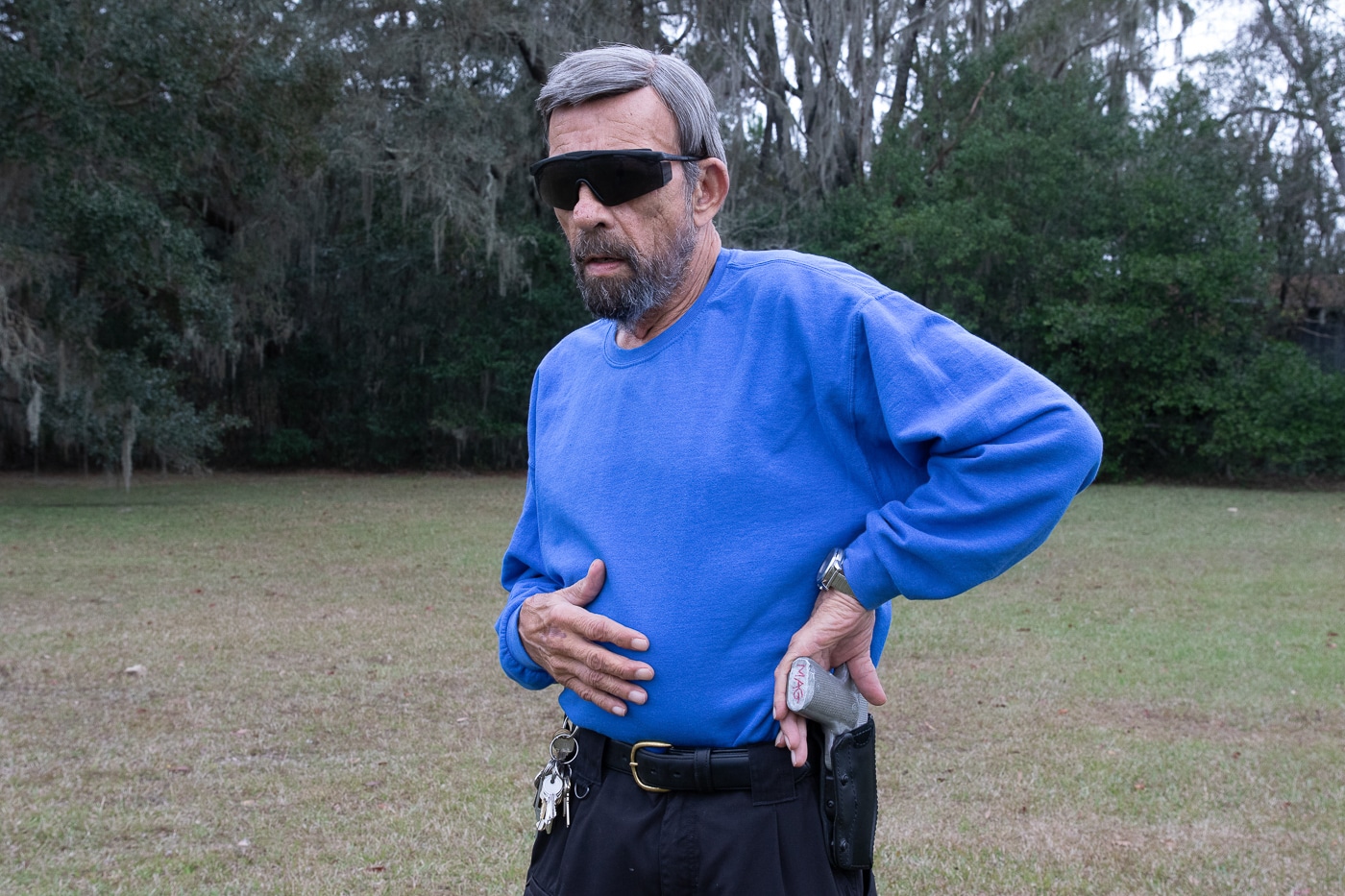
… this “cavalry draw” begins palm out/thumb pointed back, like this …
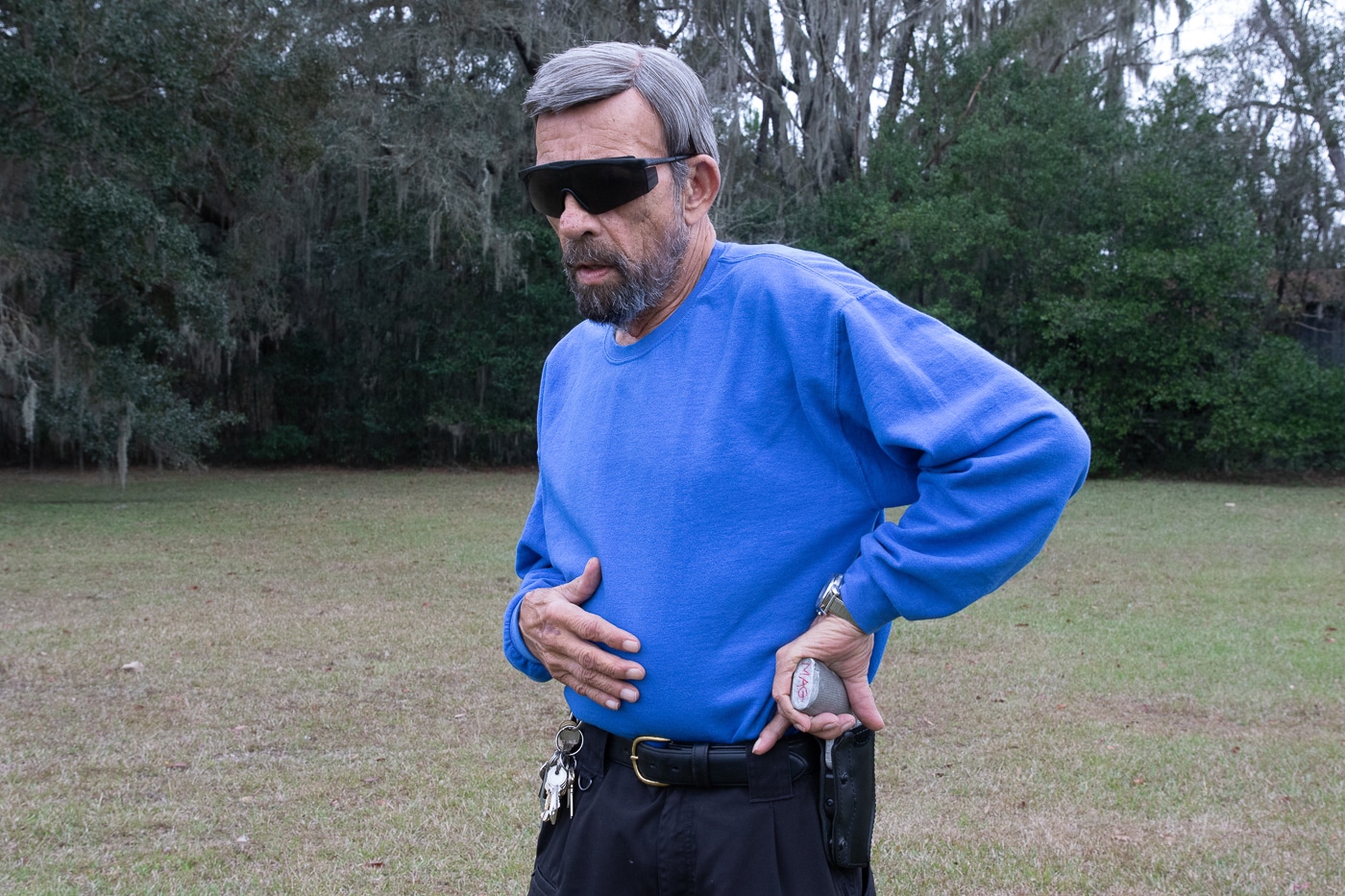
… lift straight up …
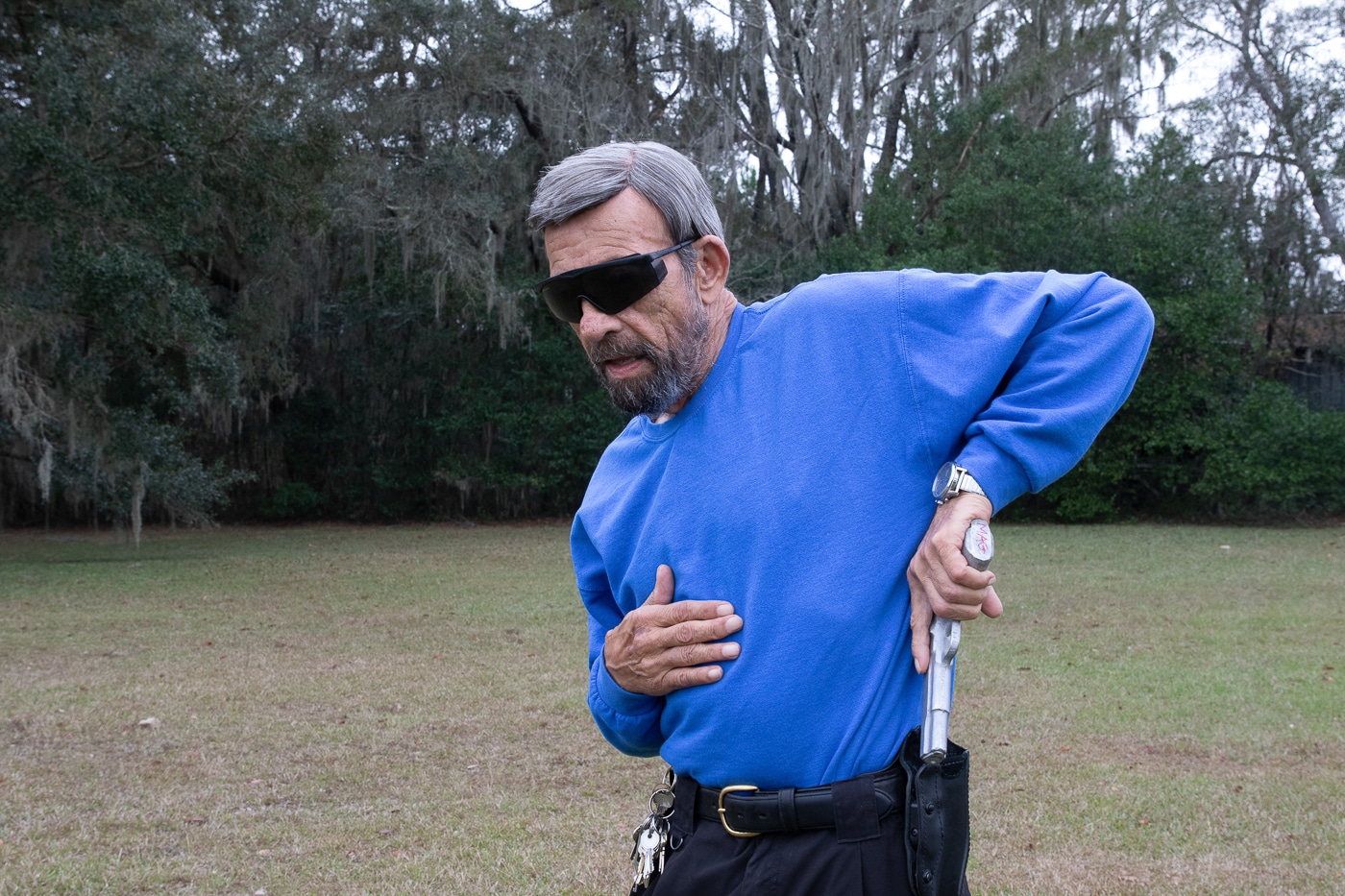
… and don’t let muzzle cross your body, but instead, with muzzle pointed forward,
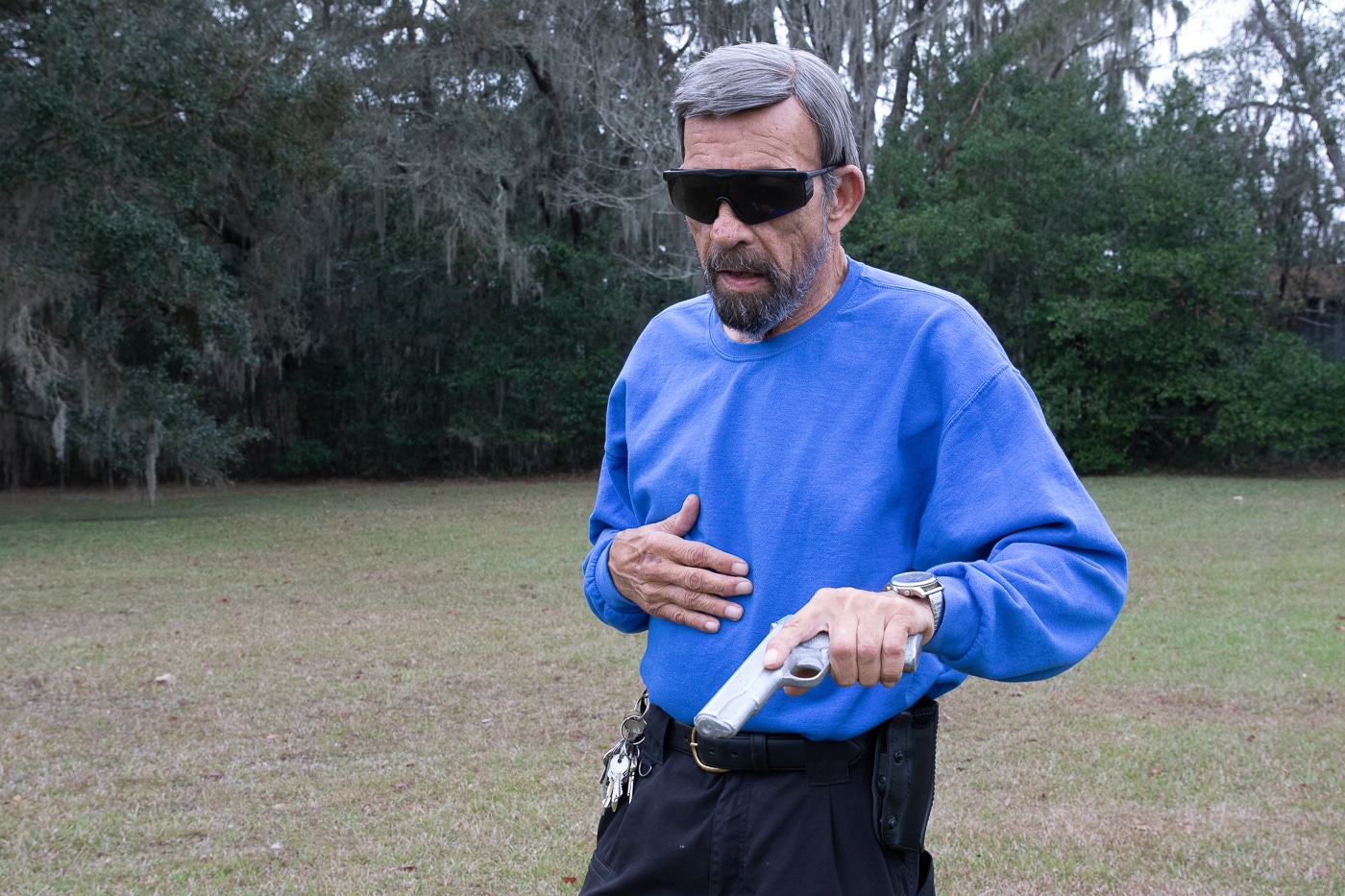
… rotate into firing position as you thrust toward target or threat …
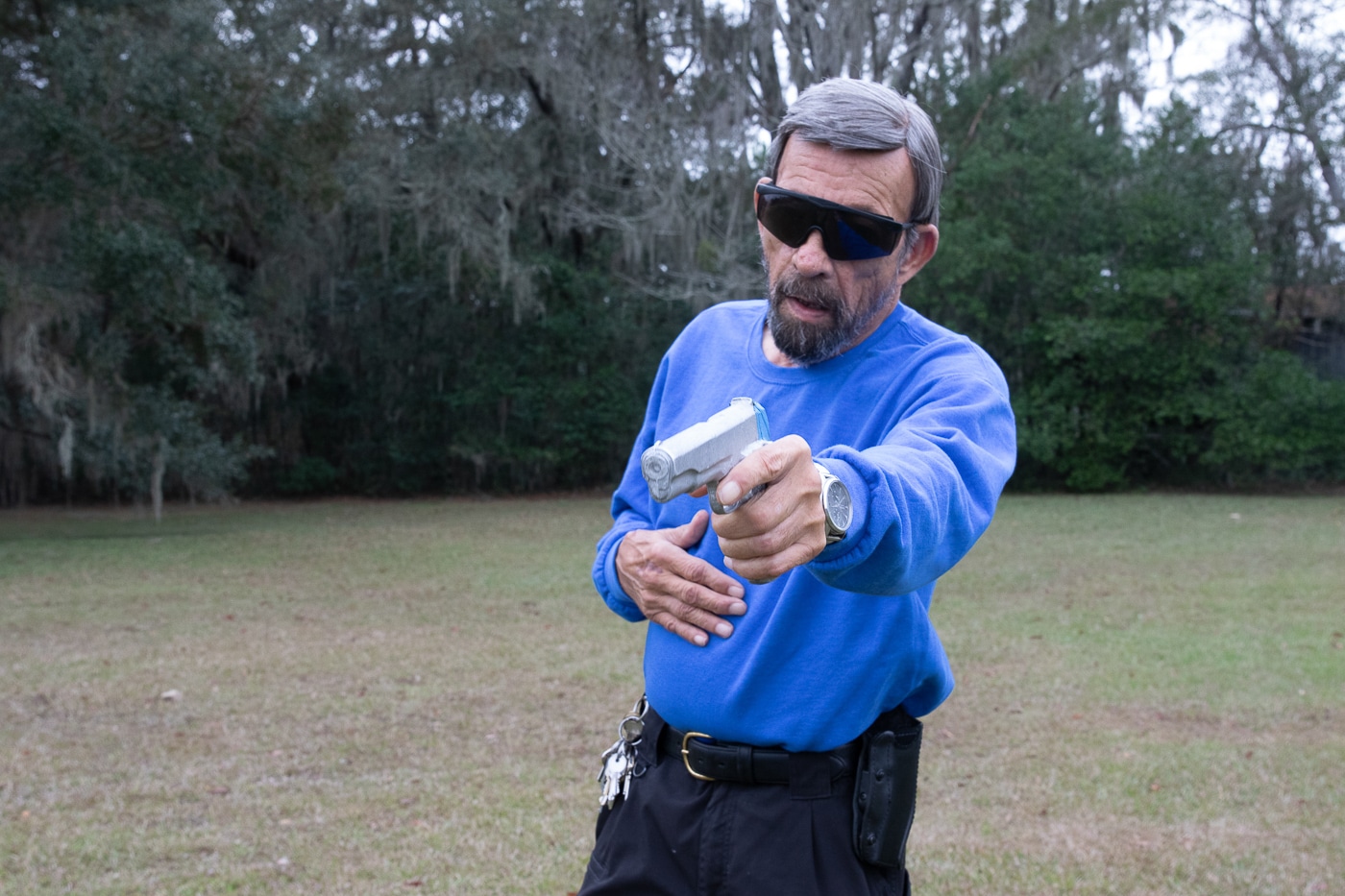
… extend toward threat …
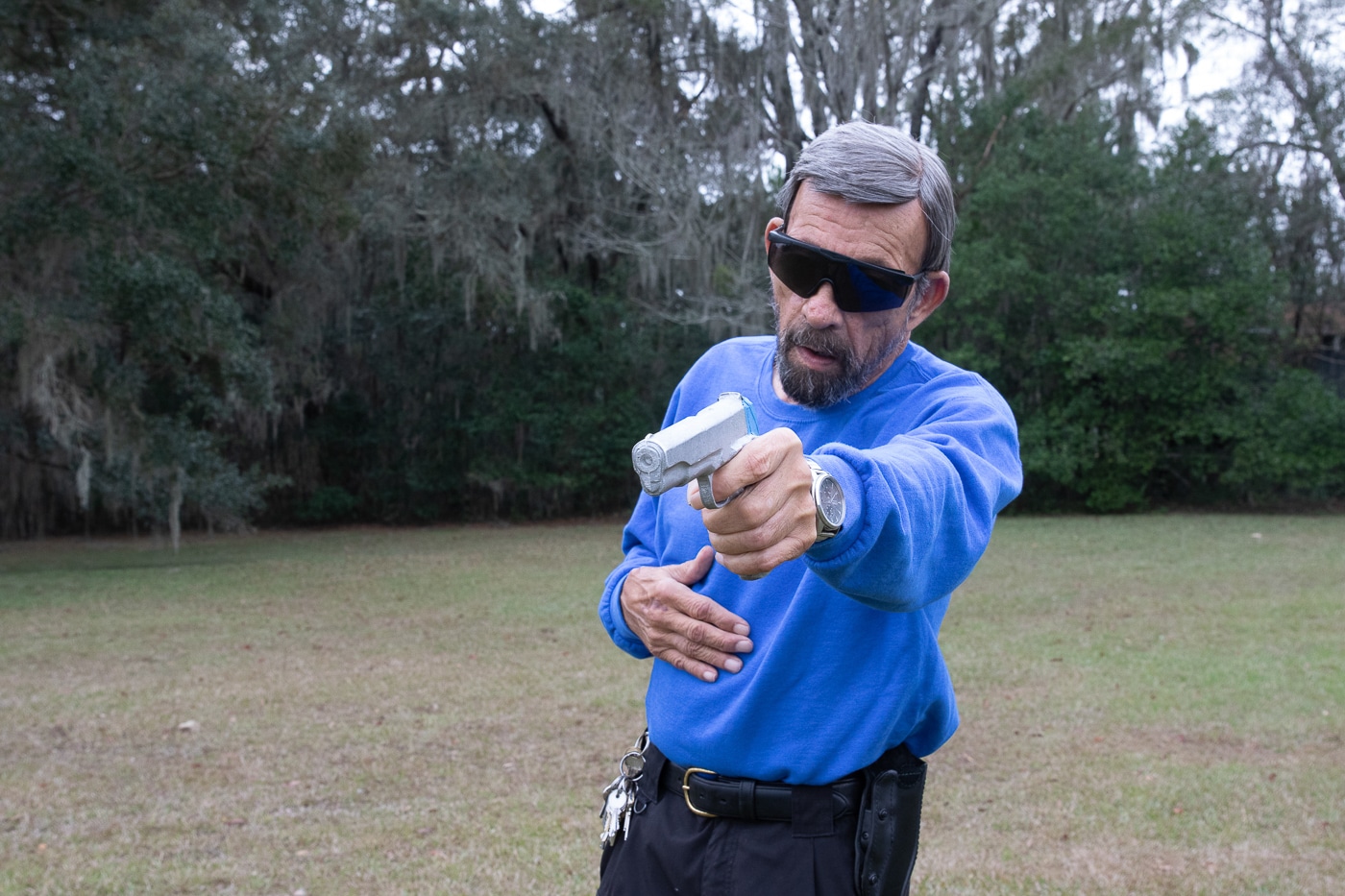
… and “cavalry draw to the shot” is complete.
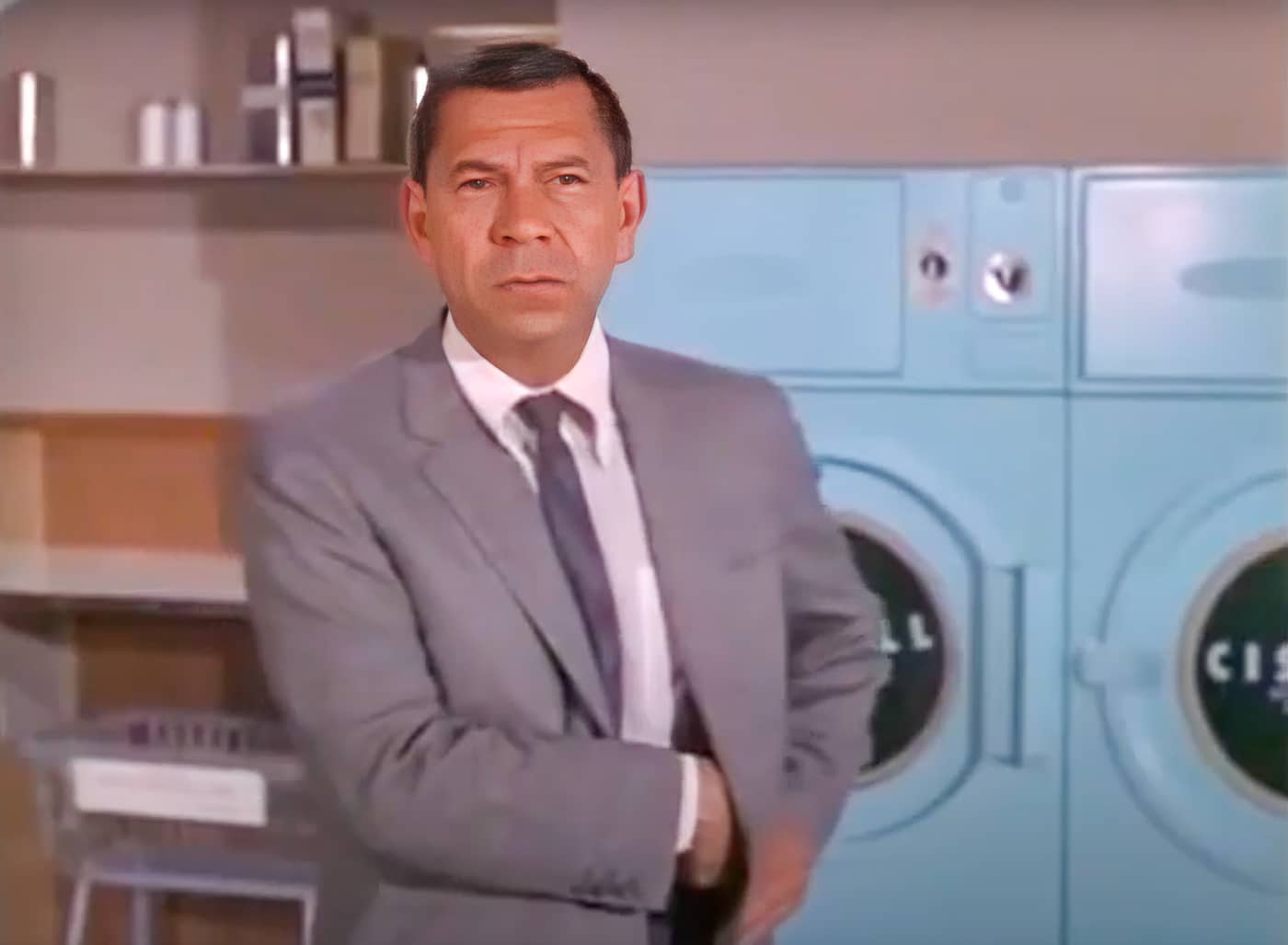
Jack Webb as Joe Friday begins the cross draw of his .38 revolver in one of the few Dragnet episodes in which he killed a criminal. Photo: Mark VII Ltd.




